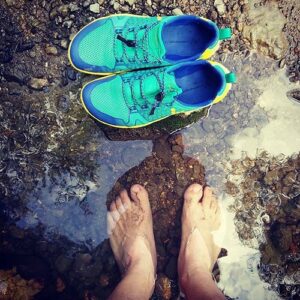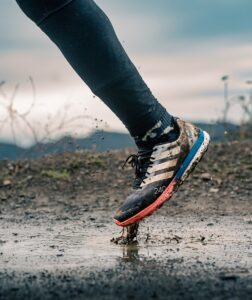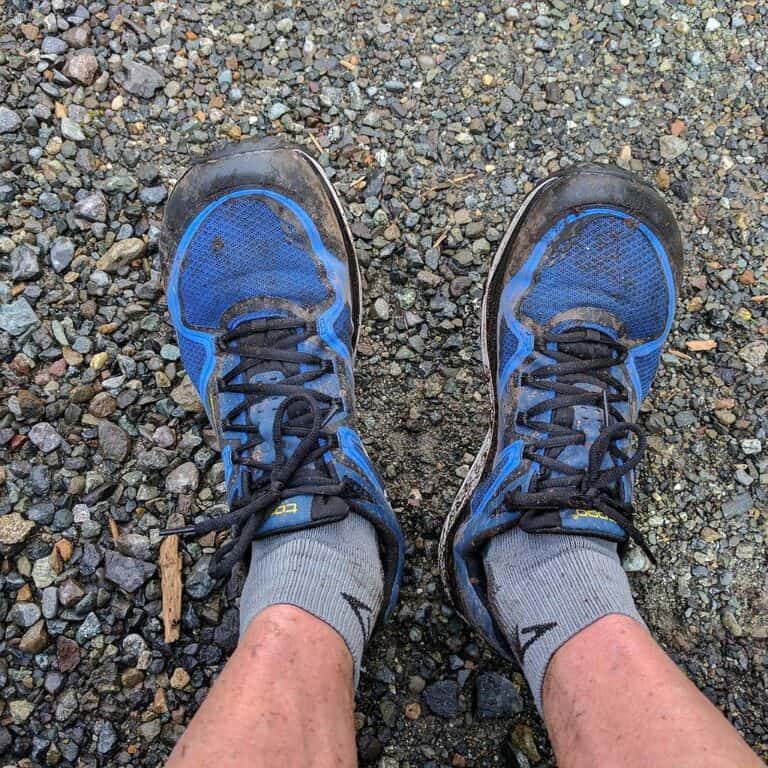What is different about trail running shoes? That seems to be the question many runners ask themselves when they decide to venture off the pavement and explore the trails. It makes sense to want a shoe designed especially for trail running, but figuring out what sets these shoes apart from their road counterparts can be confusing. In this article, we’ll dive deep into what is different about trail running shoes, and why it matters when you want to hit the trails.

What is Different About Trail Running Shoes?
Trail running shoes are a unique breed of footwear that are designed specifically for off-road adventures. While road running shoes are engineered for hard surfaces like pavement and tracks, trail shoes are built to withstand rough terrain, uneven surfaces, and the elements. When you strap on a pair of trail running shoes, you’re treating your feet to a whole new world of comfort and performance. Here are some of the key differences that separate trail running shoes from their road counterparts.
Traction: Trail Shoes vs Road Shoes
One of the first things you’ll notice when switching from road shoes to trail shoes is the improved traction trail shoes offer. While road running shoes have a flatter sole designed for smoother surfaces, trail running shoe soles feature multidirectional lugs and stickier rubber compounds that provide better traction on uneven terrain, wet surfaces, and loose material like rocks and roots.
Additionally, many trail running shoes also have aggressive tread patterns that provide extra grip on slick or muddy trails. This increased traction is essential when running off-road, as it helps maintain footing and reduce the likelihood of slipping or sliding.
Stability and Support: Running on Rough Terrain

When it comes to stability, trail running shoes often have a lower heel to toe drop than road shoes. This design reduces the chance of ankle rolls and injuries caused by uneven surfaces and helps your foot stay closer to its natural position.
Trail running shoes also tend to have thicker, more durable uppers than road running shoes. Many hiking shoes offer similar support, as they are made with sturdier and tougher materials that can withstand trail terrain and protect your feet from sharp rocks, branches, and other trail hazards. This extra support and reinforcement not only reduce the chance of injury but also help keep your feet comfortable throughout your run.
Cushioning and Comfort: Softer Surfaces vs Hard Surfaces
Another key difference between trail running shoes and road running shoes is the amount of cushioning provided. Since trail running involves softer surfaces like dirt, grass, and mud, trail shoes typically have less cushioning than road shoes. This can lead to a more responsive and connected feel to the ground.
While it might seem like less cushioning would be uncomfortable, trail runners often find that the reduced padding works to their advantage on uneven terrain. This is because the natural softness of the ground balances out the impact of each stride. Furthermore, the extra cushioning in road running shoes can make it harder to feel and adapt to the varying surfaces encountered on the trails.
When to Wear Trail Running Shoes vs Road Running Shoes

Now that we’ve explored the key differences between trail running shoes and road running shoes, when should you choose one over the other?
If you plan on running off-road or on hard-packed trails, a trail running shoe is the way to go. The added traction, support, and stability ensure you can traverse uneven terrain with confidence and reduce the likelihood of injury.
On the other hand, if your run consists primarily of pavement or other hard surfaces, sticking with a road running shoe is your best bet. Wearing trail running shoes on the pavement may reduce their lifespan due to the increased wear on the aggressive tread patterns.
Ultimately, it’s essential to consider the specific running conditions you plan to face and choose a shoe that best suits those needs. Some runners opt to have both trail and road running shoes in their collection and swap them out depending on the day’s adventure.
Versatility: Wearing Trail Running Shoes for Hiking or Mountain Biking
Trail running shoes aren’t just for trail running; many people find them to be an ideal choice for hiking or even mountain biking. Their lightweight design, traction, and support make them a popular choice for those seeking a versatile shoe for various outdoor activities. While they might not offer the same level of support and protection as hiking boots, trail running shoes offer a great balance of comfort and utility.
In short, understanding what is different about trail running shoes is crucial for selecting the right footwear for your off-road adventures. Remember to consider traction, support, cushioning, and the specific conditions you’ll be facing when making your choice. A solid pair of trail running shoes will provide your feet with the protection and performance they need to conquer the trails and enjoy the great outdoors.
